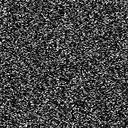Flavonoids and linderone from Lindera oxyphylla and their bioactivities.
Mots clés
Abstrait
A new linderone A, namely 2-cinnamoyl-3-hydroxy-4, 5-dimethoxycyclopenta-2, 4-dienone (5), together with three known flavonoids (1-3) and one linderone (4), were isolated from the bark of Lindera oxyphylla. Extensive spectroscopic analysis including 1D and 2D-NMR spectra determined their sturctures. In addition, the antioxidant activity of all the compounds has been determined using 2, 2-diphenyl-1-picrylhydrazyl radical scavenging (DPPH), ferric reducing antioxidant power (FRAP) and ferrous ion chelating (FIC) methods. Compound 3 showed excellent DPPH scavenging activity with IC50% value of 8.5 ± 0.004% (μg/mL) which is comparable with vitamin C. This compound, also showed an absorbance value of 1.00 ± 0.06% through FRAP test when compared with Butyl Hydroxy Aniline (BHA). However, FIC showed low activity for all the isolated compounds (chelating activity less than 50%) in comparison with ethylene diamine tetra acetic acid (EDTA). Anticancer activity for all compounds has also been measured on A375 human melanoma, HT-29 colon adenocarcinoma, MCF-7 human breast adenocarcinoma cells, WRL-68 normal hepatic cells, A549 non-small cell lung cancer cells and PC-3 prostate adenocarcinoma cell line. Compound 1 showed A549=65.03%, PC-3=30.12%, MCF-7=47.67, compound 2 showed PC-3=90.13%, compound 3 showed MCF-7=79.57 and for compound 5 MCF-7 is 96.33.





